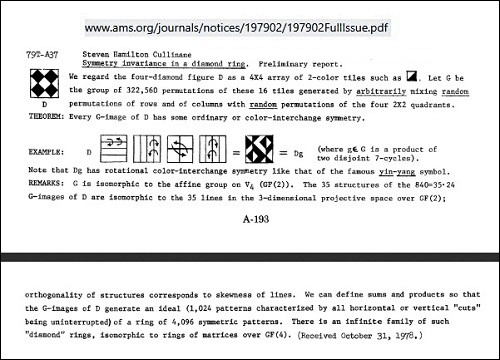On Walter Isaacson’s The Innovators :
“Yet as the book’s five hundred–plus pages unwind, Isaacson interrupts himself to present small bromides about what it means to innovate and what we might learn from these innovators, our presumed betters. “Innovation requires articulation,” he tells us, after explaining how the main strength of Grace Hopper, a trailblazing computer scientist for the US Navy, was her ability to speak in the languages of mathematicians, engineers, programmers, and soldiers alike. ‘One useful leadership talent is knowing when to push ahead against doubters and when to heed them,’ he offers later.
The book is peppered with these kinds of passages, which often intrude on the narrative, depriving us of moments of real emotional power.”
— Jacob Silverman in Bookforum , Sept/Oct/Nov 2014
From Isaacson’s book:

Related material:
In memory of T. S. Eliot…

… and in memory of Stanley Chase, producer of Colossus: The Forbin Project
and of Threepenny Opera :
Ninefold square from Colossus
(“There is another system”) —

Fourfold square introducing Brecht
in Dreigroschen Trifft Vierfarben —


















